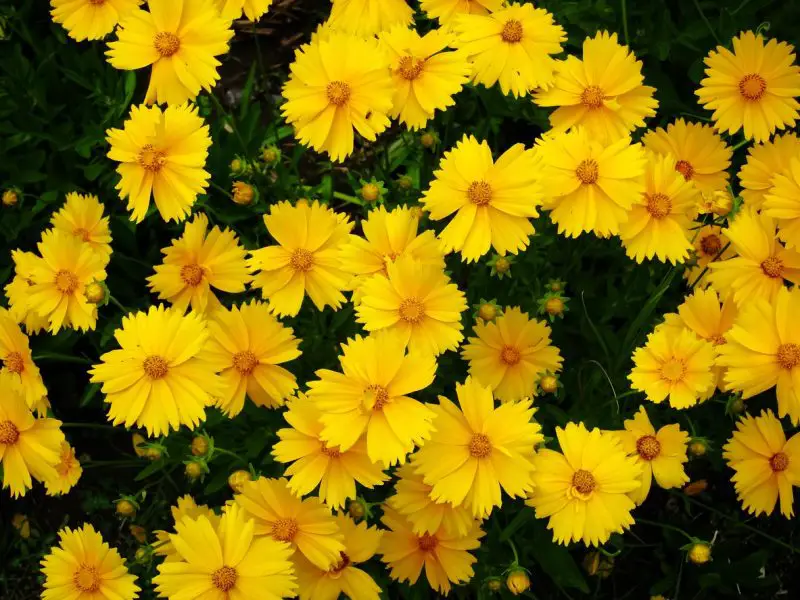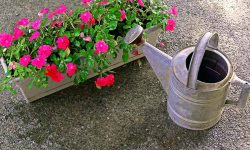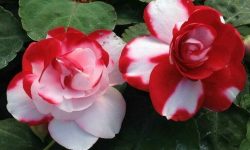Coreopsis, also known as tickseed, is a favorite among gardeners for its cheerful, daisy-like blooms and long flowering period. To keep coreopsis looking vibrant and healthy throughout the growing season, deadheading—the process of removing spent blooms—is essential. Not only does it improve the plant’s appearance, but it also encourages the growth of new flowers, ensuring a continuous display of color. However, deadheading must be done with care to avoid damaging future blooms or the overall health of the plant.
In this guide, you will learn everything you need to know about how to deadhead coreopsis effectively without compromising its future blooming potential. From understanding the plant’s growth habit to mastering the right timing and technique, this comprehensive resource will help you maximize your coreopsis’s performance in the garden.
Why Deadheading Coreopsis Matters

Deadheading coreopsis is more than just a cosmetic task—it’s essential for encouraging the plant to bloom continuously. When faded flowers are left on the plant, energy naturally shifts toward seed production. By removing these spent blooms, you redirect that energy into forming new flower buds, keeping the plant vibrant and blooming well into late summer.
This practice also prevents excessive self-seeding, especially for prolific varieties like Coreopsis grandiflora or Coreopsis tinctoria, which can quickly take over a space if left unchecked. Regular deadheading helps maintain a controlled, tidy appearance in the garden and minimizes the spread of unwanted seedlings.
Moreover, removing old blooms helps improve airflow through the foliage and reduces the chance of fungal diseases or insect infestations that thrive on decaying plant material. With just a little effort, deadheading results in a healthier plant, a longer blooming season, and a more polished landscape.
When to Start Deadheading Coreopsis
The best time to begin deadheading coreopsis is as soon as the first wave of flowers starts to fade. Typically, this occurs a few weeks into the blooming period—often in early to mid-summer depending on your region and variety. You don’t need to wait for all the blooms to finish; in fact, removing individual spent flowers as they appear can stimulate more consistent flowering over time.
Starting early keeps the plant in a state of active growth rather than allowing it to enter seed-setting mode. Once the petals begin to wilt or lose their vibrant color, that’s your cue. Acting promptly not only encourages faster bud formation but also prevents the plant from using up energy on seed development.
For long-blooming varieties like Coreopsis verticillata or Coreopsis grandiflora, this process can begin in June and continue regularly into August or even September. The key is to keep an eye on the overall appearance of the plant and be consistent with your efforts. With timely deadheading, you can extend your coreopsis display for weeks beyond its natural peak.
Understanding Coreopsis Growth Patterns
To deadhead coreopsis properly, it’s important to understand how the plant grows and flowers. Coreopsis, or tickseed, typically grows in clumps with tall, slender stems and daisy-like blooms. New buds usually form at the tips of stems or in leaf axils, especially after the first flush of flowers.
These plants bloom in waves. After the initial blooms fade, the plant will either produce seeds or more flowers—depending on whether you deadhead or not. If spent blooms are left, energy shifts to seed production, reducing flowering. By removing old flowers just above healthy leaves or visible buds, you help the plant focus on new growth.
Additionally, coreopsis is known for its resilience and fast regrowth. Once the plant senses the removal of aging flowers, it redirects nutrients to the formation of new buds. This cycle of blooming, pruning, and regrowth can repeat multiple times throughout the season, particularly in warm climates. With consistent deadheading, coreopsis can maintain a tidy shape and deliver color from early summer into fall.
Tools You Need for Deadheading
Deadheading coreopsis is a simple but rewarding task, and having the right tools makes the process easier, faster, and more effective. For most varieties of coreopsis with soft, slender stems, your fingers may be enough. Simply pinch the faded flower just above a leaf node or healthy bud and gently pull it off. This works well when blooms are dry and easy to snap.
However, for tougher or woody-stemmed varieties like Coreopsis verticillata or older plants with thicker growth, you’ll want a clean, sharp pair of pruning shears or garden scissors. Precision tools reduce the risk of tearing or damaging the stems, which helps prevent disease and encourages faster healing. Always disinfect your tools before and after use—especially if you’re working on multiple plants—to avoid spreading any fungal or bacterial issues.
It’s also helpful to have a small container or bucket nearby to collect the spent flowers. This keeps your garden tidy and prevents the accidental spread of seeds if you’re not planning to let your coreopsis self-sow.
If you’re deadheading frequently, consider wearing lightweight garden gloves. While coreopsis is generally non-irritating, gloves help protect your hands from sticky sap, dirt, and fatigue, especially when working in heat or for long sessions. Keeping the right tools handy ensures a more enjoyable experience and better results in sustaining vibrant, non-stop blooms.
How to Identify Spent Blooms
Knowing exactly when a coreopsis bloom has finished is key to successful deadheading. Spent blooms are those that have already passed their peak color and are no longer contributing to the plant’s beauty or health. In coreopsis, faded flowers typically lose their bright, cheerful hue and begin to turn dull, brown, or papery. The once-vibrant petals may curl inward or fall away, leaving behind a small, rounded seed head at the base.
Another telltale sign of a spent bloom is the overall posture of the flower. While fresh blooms stand upright with firm stems, older ones often droop or tilt to the side. If you lightly touch the flower and the petals feel dry or brittle, that’s a clear signal it’s time to remove it. You might also notice that the center of the bloom has started to swell slightly—that’s the formation of seeds, which you want to interrupt if your goal is to prolong blooming rather than encourage self-seeding.
Distinguishing between a faded bloom and one that’s just starting to open is also important. Buds are usually tightly closed with green or slightly colored tips and should be left alone. Take your time when observing your coreopsis, especially in dense clumps. Once you develop an eye for the subtle changes in petal texture, color, and bloom posture, deadheading becomes much more intuitive and effective.
Step-by-Step Guide to Deadheading Coreopsis
Deadheading coreopsis is a simple task, but doing it with care can lead to healthier plants and a longer bloom season. Begin by examining the plant in the morning or evening when the temperatures are cooler—this helps reduce plant stress. Identify the spent blooms using the signs you’ve learned: faded color, brittle petals, and the presence of a seed head forming at the base.
Once you’ve spotted a faded flower, follow the stem downward to where it meets the next set of healthy leaves or lateral buds. This is the point where you’ll want to make your cut. Use clean, sharp garden shears or scissors to snip the stem at a slight angle just above those leaves. Cutting too close to the bud can damage it, while leaving too much stem can look untidy and slow down new growth.
For threadleaf or lance-leaf varieties, which often bloom in large clusters, you may find it quicker to shear off entire sections after the first flush of flowers fades. Use hedge clippers or garden shears to trim the plant back by about one-third. This stimulates uniform new growth and a fresh flush of buds within a few weeks.
After deadheading, consider watering the plant if the soil is dry and applying a light dose of balanced fertilizer to support regrowth. Monitor your plant over the next few days. You should see new buds forming and green growth returning quickly. Repeating this process throughout the season not only keeps your garden looking fresh but encourages coreopsis to continue flowering deep into summer.
How to Avoid Damaging Future Blooms
The most common mistake when deadheading is cutting too deeply into the plant or removing healthy buds along with the spent flowers. Always check carefully for small developing buds before snipping. These may be nestled just below the bloom or along a branch.
Avoid shearing the plant back too aggressively unless you’re performing a rejuvenation trim after the peak bloom season. For day-to-day maintenance, precision and restraint are key. Err on the side of removing less rather than more if you’re unsure.
Another way to protect future blooms is to use sharp tools that make clean cuts. Ragged or crushed stems can become entry points for diseases and slow down new growth. Keep blades sharp and sanitized.
Deadheading Different Coreopsis Varieties
Deadheading Threadleaf Coreopsis (Coreopsis verticillata)
Threadleaf coreopsis, with its fine, airy foliage and abundant daisy-like flowers, benefits greatly from regular deadheading. These varieties, such as ‘Moonbeam’ and ‘Zagreb’, bloom profusely and can produce waves of color throughout summer if maintained properly. Once flowers fade and petals begin to drop, pinch or snip the flower stem back to the first set of leaves or a lateral bud. Doing this weekly will keep the plant tidy and productive.
Threadleaf types are especially responsive to this method, and consistent removal of old flowers can encourage reblooming well into early fall. These plants tend to form bushy mounds, so keeping them trimmed also helps prevent legginess.
Deadheading Large-Flowered Coreopsis (Coreopsis grandiflora)
Grandiflora varieties like ‘Early Sunrise’ or ‘Sunray’ produce larger blooms on taller stems. These require a bit more precision during deadheading. After the bloom fades and the petals dry, cut the flower stem just above a healthy pair of leaves or a side shoot. This not only triggers new flower development but also prevents the plant from putting energy into seed production.
Because of their upright growth habit, deadheading helps maintain a clean silhouette and encourages new buds to form from lower down the stem.
Deadheading Tickseed Hybrids
Many hybrid varieties of coreopsis, including newer cultivars with red, pink, or bi-colored blooms, have been bred for extended blooming and lower maintenance. However, deadheading still boosts performance. For example, cultivars like ‘Mercury Rising’ or ‘Red Satin’ bloom in flushes, and removing faded blooms promptly can stimulate a second or even third bloom cycle.
Hybrid varieties often have more branching stems, so after cutting back a spent flower, examine the nodes below for emerging buds. Avoid shearing all at once—selective trimming gives a more natural and effective refresh.
Deadheading Dwarf or Compact Coreopsis
Compact types, such as those in the ‘Limerock’ or ‘UpTick’ series, are favorites for containers or borders. These tend to be low-growing and bloom heavily. Deadheading can be done by pinching with fingers or using scissors for cleaner cuts. Since the plant often blooms so prolifically, you can deadhead in small sections over time, allowing other areas to continue displaying color.
These dwarf forms often rebloom quickly, and maintaining a neat shape with light, regular deadheading supports a long flowering period without overwhelming the plant’s energy reserves.
Seasonal Deadheading and Cutting Back
Seasonal deadheading and cutting back are essential for keeping coreopsis healthy and attractive. During summer, removing faded blooms regularly helps the plant keep producing new flowers. This also stops it from putting energy into seed production. In early fall, trimming the plant back by one-third to one-half gives it a fresh shape and may encourage a final round of flowering. It also prevents the plant from becoming leggy or overgrown.
As fall turns to winter, a deeper cutback helps prepare coreopsis for dormancy. In cold regions, removing dead stems and leaves can prevent pests and disease from overwintering. In warmer areas, you can leave some foliage for winter interest and prune more heavily in spring. Adjusting your approach based on the season ensures your coreopsis stays full, tidy, and blooming beautifully year after year.
Benefits Beyond More Flowers
Deadheading coreopsis does more than just increase the number of flowers. It also helps the plant stay compact and well-shaped. By removing faded blooms, you prevent the plant from putting energy into seed production. This energy goes back into root development and new growth instead.
Another benefit is that it improves the plant’s overall appearance. Without dead, brown flowers cluttering the top, the plant looks fresh and tidy. It can also reduce the risk of disease by stopping mold and mildew from forming on decaying blooms. In garden beds, consistent deadheading helps coreopsis blend better with other flowers, maintaining a clean and colorful landscape.
Regular deadheading can also extend the blooming season well into late summer or early fall, depending on your region. Instead of a quick burst of color followed by dormancy, coreopsis continues to produce fresh blooms week after week. This extended display not only adds long-lasting beauty to your garden but also provides a consistent food source for pollinators like bees and butterflies. Keeping the plant in an active blooming cycle through deadheading helps you get the most out of your growing season, both visually and ecologically.
What to Do With Removed Blooms
After removing spent coreopsis blooms, don’t just throw them away—there are several smart and eco-friendly ways to repurpose them. If the blooms haven’t gone to seed yet, you can add them to your compost pile. These flower heads break down quickly and contribute valuable organic matter to your compost, which can later enrich your soil. If some of the blooms have mature seeds, consider drying and saving them for future planting. Simply lay them out on a paper towel in a cool, dry place until completely dry, then store in labeled envelopes or small jars. This allows you to grow more coreopsis next season or share seeds with fellow gardeners. For a decorative touch, some gardeners even use dried blooms in natural crafts or homemade potpourri.
Another thoughtful use for removed blooms—especially those with mature seeds—is to scatter them in untamed or wild areas of your garden. Coreopsis self-seeds easily, so placing dried flower heads in less-manicured corners can encourage naturalized patches of vibrant blooms the following year. This method works well for gardeners aiming to create pollinator-friendly or meadow-style spaces. Plus, it helps preserve the plant’s lifecycle while supporting bees, butterflies, and other beneficial insects. Just be sure the spot receives enough sunlight and has decent drainage, as coreopsis thrives best in bright, open conditions. By reusing deadheaded blooms wisely, you turn simple maintenance into an opportunity to extend your garden’s beauty and ecological value.
Troubleshooting Common Deadheading Mistakes
Deadheading coreopsis is generally simple, but there are a few common mistakes that can hinder blooming, stress the plant, or even cause long-term growth issues. Identifying and avoiding these pitfalls can ensure your plant continues to thrive and bloom prolifically all season long.
Cutting Too Deep Into the Stem
One of the most frequent mistakes is cutting too far down into the plant’s stem. Instead of just removing the spent flower and its short stalk, some gardeners accidentally cut into a main growth stem, especially if the foliage is dense. This not only removes future bloom sites but also forces the plant to redirect energy into healing and regenerating growth points, delaying new flower production. Always deadhead just above a healthy set of leaves or a lateral bud, which encourages new flowering stems to form quickly.
Ignoring Small or Lateral Blooms in Clusters
Many coreopsis varieties, especially threadleaf types like Coreopsis verticillata, produce blooms in branching clusters. A common oversight is removing only the central spent flower and leaving smaller side blooms that have already faded. This can give the plant a messy look and signal to the plant that it’s time to produce seeds. For optimal results, inspect the entire flowering cluster and remove all individual spent flowers at once to promote a fuller second flush.
Deadheading Too Early
Sometimes gardeners confuse a slightly fading flower with one that is fully spent and remove it too soon. This can waste the plant’s energy by interrupting the flowering process prematurely. A flower is ready to deadhead only when the petals begin to wilt, discolor, curl, or dry out—typically after pollination is complete. Removing it earlier deprives you of bloom time and offers little benefit to the plant.
Using Dirty or Dull Tools
Another commonly overlooked mistake is using unclean or dull pruning tools. If your scissors or pruners harbor pathogens or can’t make a clean cut, you risk infecting the plant or creating ragged wounds that take longer to heal. Always sterilize your tools with isopropyl alcohol or a bleach solution before each use. Sharp, clean blades reduce stress on the plant and ensure fast recovery after deadheading.
Deadheading Too Infrequently
Infrequent deadheading can lead to a slowdown in flowering. If spent blooms are left on the plant for too long, coreopsis will begin to direct its energy toward seed production instead of flower formation. This natural shift is the plant’s way of completing its reproductive cycle. To prevent this, check your plant every few days during peak bloom season and promptly remove spent flowers to keep energy flowing into new bud development.
Removing Too Many Leaves
Sometimes while trying to clean up the plant, gardeners remove not just spent flowers but also healthy leaves surrounding the bloom. While this might make the plant look tidy in the short term, it reduces the plant’s ability to photosynthesize and store energy, potentially weakening it over time. Avoid stripping away more foliage than necessary when deadheading—focus only on flower stems.
Combining Deadheading With Other Maintenance
Deadheading is most effective when it’s integrated into a broader routine of seasonal plant care. Rather than treating it as an isolated task, combining deadheading with other maintenance activities can enhance your coreopsis plant’s overall health, longevity, and bloom potential.
Light Pruning to Shape the Plant
While you’re deadheading, take a few moments to assess the plant’s overall shape. If some stems have become leggy, uneven, or sprawled out of bounds, this is a great opportunity to lightly prune them back. Shaping your coreopsis not only improves its appearance but also encourages bushier, more compact growth. This results in more flowering stems and less chance of the plant flopping over as it matures.
Removing Damaged or Diseased Growth
As you inspect the plant for spent blooms, also look for signs of disease or insect damage, such as yellowing leaves, black spots, or chewed foliage. Remove any affected stems or leaves right away to prevent issues from spreading. Early intervention helps keep the plant vigorous and supports healthier new growth. Be sure to clean your tools between cuts if disease is suspected to avoid cross-contamination.
Rejuvenating Tired Plants Mid-Season
By mid to late summer, coreopsis may start to look tired, especially if it has bloomed heavily. After a thorough round of deadheading, consider giving the plant a more substantial trim—cutting back by about one-third to one-half of its height. This rejuvenation cut removes older stems, promotes airflow, and stimulates the plant to produce fresh foliage and another round of blooms before fall. Follow this up with a dose of balanced fertilizer and deep watering to aid recovery.
Fertilizing at the Right Time
After a major deadheading session, especially one combined with light pruning, your coreopsis is in a strong position to grow new buds. This is the ideal moment to provide a light feeding of a balanced, slow-release fertilizer or compost tea. Avoid overfertilizing, as excessive nitrogen can lead to lush foliage at the expense of flowers. The goal is to support steady, flower-friendly growth without overwhelming the plant.
Mulching and Watering Adjustments
As you clean around your plant, it’s also wise to check the mulch layer. Deadheading sessions are a good time to refresh mulch if it has thinned out. A 1–2 inch layer of organic mulch helps retain soil moisture, suppress weeds, and stabilize soil temperature. Also, take note of the soil moisture levels. Coreopsis is drought-tolerant but still appreciates regular watering during extended dry spells, especially after deadheading and pruning when it’s putting out new growth.
Encouraging Pollinators While Deadheading
Deadheading is essential for maintaining continuous blooms in coreopsis, but it’s equally important to consider how this practice affects pollinators like bees, butterflies, and other beneficial insects. While removing spent flowers promotes new growth, being too aggressive with deadheading can temporarily reduce the number of available blooms, which pollinators rely on for nectar and pollen. To strike a balance, avoid cutting off every single faded flower at once, especially during peak foraging times in mid-morning and early afternoon when pollinator activity is highest. Instead, deadhead in stages—removing only the most withered or dried flower heads first, and leaving those that are still partially open. This allows pollinators continued access to food sources while the plant transitions to producing new buds.
Another effective strategy is to plant multiple coreopsis clumps or companion flowering species with overlapping bloom times. This ensures that even when one group is being pruned or refreshed, others remain in flower to support pollinator activity. Additionally, leaving a few flower heads to go to seed later in the season can provide not only winter interest and seeds for birds but also give late-season pollinators a final foraging opportunity. Being mindful of pollinators during deadheading doesn’t just benefit wildlife—it also encourages better pollination of your garden as a whole, which can result in stronger seed development and more vigorous plants in the long run.
If you’re gardening organically, avoid using pesticides or herbicides on or near your coreopsis, especially during or shortly after deadheading. These substances can linger on new growth and harm beneficial insects that visit the refreshed blooms. In short, thoughtful deadheading practices that take pollinator needs into account help you maintain a garden that is not only beautiful but also ecologically healthy and buzzing with life.
FAQs About Deadheading Coreopsis
How often should I deadhead coreopsis during the growing season?
Deadhead coreopsis regularly from late spring to early fall. Check once a week and remove faded blooms as soon as they start to wilt. This keeps the plant neat and encourages more flowers to form throughout the season.
What’s the difference between deadheading and cutting back?
Deadheading removes individual spent flowers to promote more blooms. Cutting back trims larger portions of the plant, often to control size or encourage bushier growth. Coreopsis may need both during the season—deadhead often, and cut back in midsummer if flowering slows.
Can I deadhead coreopsis with my fingers or should I use tools?
You can use your fingers to pinch off soft flower heads, but pruning shears or garden snips are better for thicker stems or precise cuts. Clean tools also reduce the risk of disease and make the process easier, especially for large clumps.
Do all types of coreopsis need deadheading?
Not all coreopsis varieties need it. Some, like ‘Moonbeam’ or ‘Zagreb’, drop flowers naturally and rebloom on their own. Even so, occasional deadheading improves their appearance and extends bloom time for most types.
What should I do with the deadheaded flowers?
If the blooms are healthy, add them to your compost pile. Avoid composting diseased or moldy flowers. You can also leave a few seed heads late in the season to support birds or let the plant reseed naturally for next year.
Final Thoughts on Deadheading Coreopsis
Deadheading coreopsis is a rewarding task that enhances the plant’s beauty, longevity, and ecological value. With the right timing, tools, and techniques, you can keep your garden bursting with cheerful blooms from spring through fall.
Remember to approach deadheading as a gentle, mindful process. Regular attention and a light touch will keep your coreopsis healthy and productive without risking next season’s flowers. By incorporating deadheading into your routine, you not only support better blooming but also cultivate a stronger connection with your garden.






